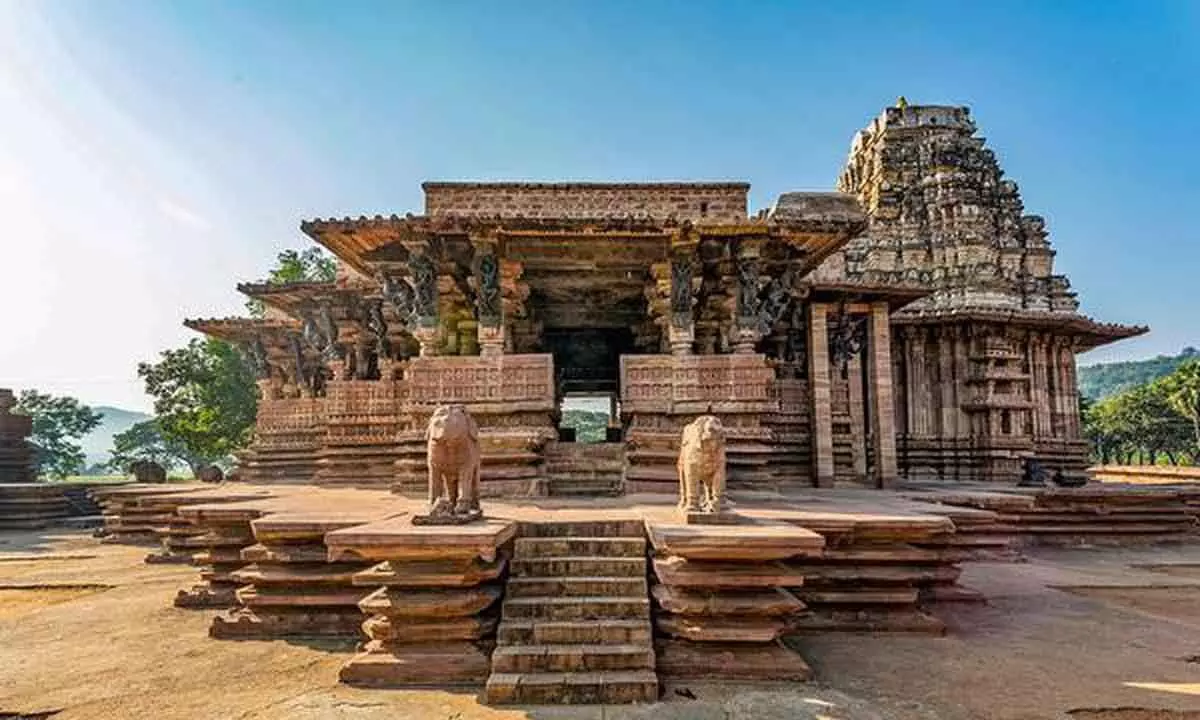Ramappa Temple, located in Palampet village of Venkatapur mandal, Mulugu district, is not only a symbol of India’s architectural prowess but also a UNESCO World Heritage Site. This remarkable Kakatiya-era temple is now at the center of a critical debate due to the discovery of coal reserves nearby. Singareni Collieries Company Limited (SCCL) has identified substantial coal deposits in the area, creating a tug-of-war between preserving this cultural marvel and pursuing regional economic growth through mining.
Coal Reserves Found Near Ramappa Temple: Opportunities and Risks
Just six kilometers away from the Ramappa Temple lies Venkatapur village, where SCCL has discovered approximately 40.43 million tons of coal reserves. The project proposes to extract these resources over a span of 19 years, involving around 314 hectares of forest land and 1,480 hectares of agricultural and assigned lands.
Initial plans for the mining project included farmer compensation and a well-structured rehabilitation and resettlement (R&R) package. The proposed timeline anticipated the beginning of open cast coal mining by December 2021. However, the temple’s recognition as a UNESCO World Heritage Site in July 2021 garnered significant international attention, bringing with it waves of opposition from local residents and environmental activists.
Public Concerns Over Ramappa Temple’s Preservation
The Ramappa Temple, renowned for its intricate carvings and historical significance, has become a global tourist attraction post-UNESCO accreditation. Any activity risking potential damage to the temple has faced intense scrutiny. The residents of nearby villages, backed by heritage conservationists, expressed strong objections to the mining project, fearing its detrimental effects on the temple’s structural stability and the surrounding environment.
Scientific Studies Address Mining’s Impact on Ramappa Temple
To address these concerns, SCCL partnered with institutions such as IIT Madras, NGRI, and Nagpur-based National Environmental Engineering Research Institute to assess the potential impacts of mining. The studies confirmed that vibrations caused by mining activities, including blasting, were negligible. At 0.01 Hz, the vibrations were well below the 3.3 Hz frequency tolerance of the Ramappa Temple’s structure.
Additionally, air pollution assessments conducted by environmental agencies concluded that measures could be implemented to mitigate adverse effects. SCCL cited the ongoing KTK Open Cast-3 mining operations, which are situated six kilometers from Ghanpur Lake and five kilometers from Kotagullu village. These sites have operated for three years without any reported ecological or structural damages, providing a precedent for responsible mining practices.
Balancing Heritage and Economic Development
The debate surrounding Ramappa Temple reflects the complex interplay between heritage preservation and regional economic progress. On one side lies the unparalleled historical and cultural value of the temple, a timeless masterpiece attracting thousands of domestic and international tourists. On the other side is the promise of economic opportunities for the local population, brought by the coal mining project.
Striking a balance between these two priorities requires innovative and sustainable solutions. Environmental safeguards, community engagement, and regular impact assessments can play a pivotal role in ensuring that both heritage and economic development coexist without compromising one for the other.
Ramappa Temple: A Treasure Worth Protecting
As a beacon of India’s rich architectural legacy, the Ramappa Temple serves as a reminder of the extraordinary craftsmanship of the Kakatiya dynasty. From its exquisite sandstone sculptures to the precision of its floating bricks used in construction, the temple is a testament to ancient engineering excellence. Protecting such treasures is vital not only for historical preservation but also for fostering cultural pride.
The government, conservation bodies, and local communities must collaborate to ensure Ramappa Temple’s enduring glory while exploring ways to develop the region economically. Sustainable tourism can be a viable alternative to mining, providing long-term benefits without harming the temple’s legacy.
Conclusion: The Future of Ramappa Temple Amidst Mining Discussions
The Ramappa Temple coal mining controversy emphasizes the pressing need for a collaborative approach that respects cultural heritage and promotes regional development. By investing in thorough research, adopting sustainable practices, and prioritizing dialogue between stakeholders, it is possible to secure a future where history and progress align.
At the heart of this issue is a timeless truth: cultural treasures like the Ramappa Temple are irreplaceable. Preserving them while fostering responsible development is not just an option—it’s an imperative for the generations to come.







